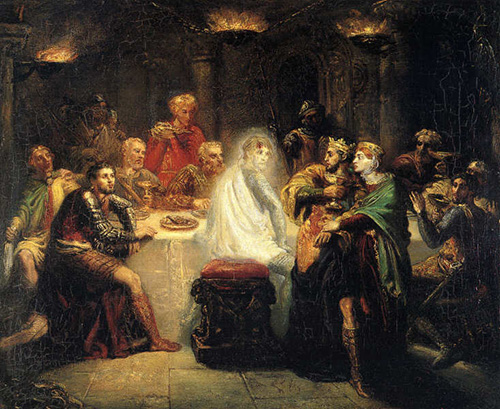
This Sunday’s Gospel introduces us to ghosts! (Lk 24: 35 – 48)
[The disciples] told what had happened on the road, and how Jesus had been made known to them in the breaking of the bread. While they were talking about this, Jesus himself stood among them and said to them, “Peace be with you.” They were startled and terrified and thought that they were seeing a ghost. (Lk 24: 37)
A rustle in the bushes, a creaking floorboard, the curtain blowing at the window on a wind-less night, and the anxiety that follows.
For as long as human beings have been self-aware, it seems they have also been aware of ghosts. The concept of ghosts, and ghost stories, dates far back into human history and has captivated and mystified the human race for generations.
Oresteia, a trilogy of Greek tragedies first performed in 458 BC.
Pliny the Younger the Roman lawyer recounted his famous ghost story around 100AD, proving that these chilling stories have been commonplace for at least two thousand years.
Shakespeare’s treatment of ghosts was used as a key storytelling tool, as can be seen in his revered play, Macbeth and the ghost of Banquo.
Ghosts appear also in Richard III, and of course Hamlet.
Referred to in the stage directions as ‘Ghost’, the ghost appears just three times in the play, acting as a catalyst for Prince Hamlet’s actions.
In 1843, Charles Dickens wrote what is probably the most famous ghost story of all time “A Christmas Carol”, which follows the journey of Ebeneezer Scrooge from miserly money-lender to a kind and loving man.
Told in five chapters, or ‘staves’ as Dickens called them, Scrooge is visited by four spirits on Christmas Eve, each of whom opens his mind to the world around him.
